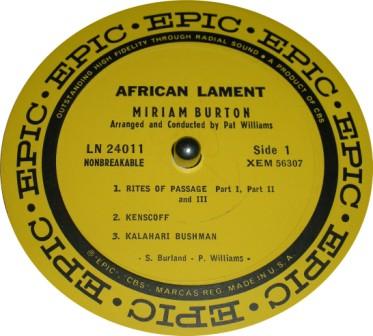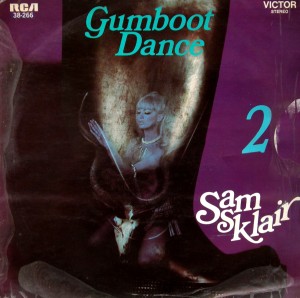Africa has always been a great inspiration for many contemporary artists, designers and musicians alike. No wonder that the record industry in the 1950’s-1960’s sent their best team of designers on safari discovering the great forgotten continent, either for inspiration or exploitation.
This gallery is dedicated to the wonderful art of Africana record covers from my collection.

Horst Wende & his Orchestra-Africana (Africa In Rhythm) (Polydor LPHM 46336, Germany)
This record from 1958 released on German Polydor Records showcases the variety of popular musical styles of South Africa re-arranged by producer and band leader Horst Wende, also known as Roberto Delgado.
Horst Wende & His Orchestra -Kwela
The big band orchestra of Wende/Delgado adapted their music to the various destinations of the time when tourism boomed; in ‘Blue Hawaï’ for Hawaï, South American Rhythms on ‘Caramba’, ‘Latin Flutes’ for Bolivia en Equator, while ‘Along Mexican Highways’ was a tribute to Herb Alpert (trumpet) and Julius Wechter (marimba). The LP ‘Africana’ celebrates the music of South Africa in the 1960s, originally popularized by local musician Nico Carsten and bandleaders like Sam Sklair and Dan Hill.
The Trans-World Symphony Orchestra-Edmond de Luca’s -Safari (Somerset Records SF5500, USA)
aah…Safari. I found this LP during my recent Japan trip and was immediately attracted to the title and the fabulous cover. The selection turned out to be a musical safari throughout Africa by The Trans-World Symphony Orchestra, orchestrations based upon classical compositions as ‘Polovtsian Dances’ from ‘Prince Igor’ and ‘Ritual Fire Dance’ by Manuel de Falla. Symphonic shlock to the extreme but man, what a cover!
Prince Onago & Princess Muana & Native Drummers of the Belgian Congo: The Drums of Africa (20th Century Fox S20F-4008, 1959 Japan)
10″ record found in a small shop in Osaka, Japan.
The artwork was designed by Irving Seidmont Docktor who was a prolific artist and educator best known for his work as a book and magazine illustrator in the 1950s and 1960s.

The cover intrigued me as did the story and picture of Prince Onaga and Princess Muana. As the credits say this music was recorded with native drummers of the Belgian Congo, but in reality the recordings were probably more designed for the Silver Screen and the adventure of Stereo.
Prince Onago & Princess Muana & Native Drummers of the Belgian Congo -Flirtation Song
Prince Onago & Princess Muana & Native Drummers of the Belgian Congo -Congo Syncopation
Les Baxter -The Soul of the Drums (Reprise Records – R9-6100, 1963 USA)
no further explanation necessary. In the 1950s and 1960s Les Baxter, the king of lush Hollywood movie themes defined a sound and style that called itself ‘Exotica’. Great cover too…

African tribal masks have always intrigued artists from Picasso to Art Blakey to UK rapper MC Mello.
See also previous post Chris McGregor’s Brotherhood Of Breath -1971

MC Mello -Open Up Your Mind (Republic Records LICT 033, 1990 UK)
Anna Russell -In Darkest Africa (CBS BLD 7084, South Africa)
Anna Russell’s jokes ain’t funny any longer but this cover surely is….those warriors ain’t real Zulu Warriors for sure. That photograph is oh so politically incorrect nowadays but as record cover art it works as good as it gets.
Nico Gomez & his Afro Percussion INC-Ritual (Omega International 444.022, Holland)
classic! Well searched after for the track ‘Lupita’.
Nico Gomez & his Orchestra -selftitled (Omega International 444.039, Holland)
musically the menu is all cha cha, mambo and Latin trashy sound-alikes but hey, what a funky Afro-hairdo!!
see also Afro baby! a tribute to a funksoulsista and
Blue Elephant -Black Is Beautiful -cover art
















